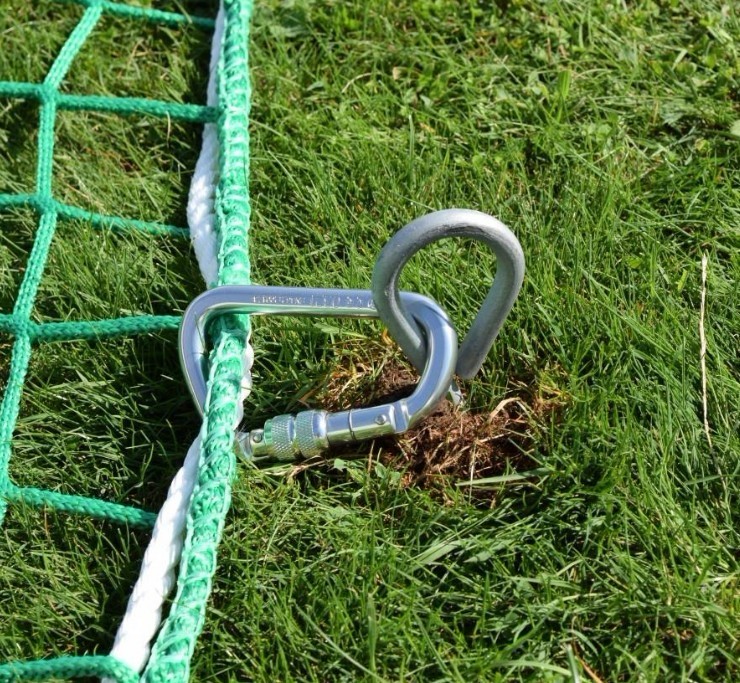The Milky Way Galaxy in the nighttime sky above the HERA array. The telescope is only able to ... [+] observe between April and September, when the Milky Way is below the horizon, because the galaxy produces a lot of radio noise that interferes with the detection of faint radiation from the Epoch of Reionization. The array sits in a radio-quiet region where radios, cellphones and even gasoline-powered cars are prohibited.
In the beginning, about 13.8 billion years ago, there was the “Big Bang,” but then what? About 200 million years later, amid the debris, stars coalesced. Then dwarf galaxies. Their light heated the intergalactic medium and the universe as we know it emerged. Stainless Steel Ground Anchor

That moment the stars first switched-on is called the “cosmic dawn,” a unique period in the history of the universe that astronomers are desperate to learn more about. What were these so-called “population 1” stars and small galaxies like?
The James Webb Space Telescope (JWST) has got close to an answer, imaging a galaxy that existed when the universe was roughly 325 million years old. Impressive, but not close enough.
Could the world’s most sensitive radio telescope go one better and see right back to this “cosmic dawn”—despite being made largely from chicken wire?
Possibly, because the Hydrogen Epoch of Reionization Array (HERA)—a network of 350 radio telescopes in the Karoo desert of South Africa—has just had its sensitivity doubled. Radio astronomy is the study of the sky in radio frequencies, a form of electromagnetic radiation just as visible light is. Arrays like the HERA are arranged on the Earth’s surface to amplify weak radio signals.
No matter that HERA’s new detectors are made from chicken wire, PVC pipe and telephone poles. “At two meters wavelength, a chicken wire mesh is a mirror,” said Dillon. “All the sophisticated stuff is in the supercomputer backend.”
Published online and accepted by The Astrophysical Letters for future publication, the HERA team’s paper outlines how they have improved the sensitivity of the array by a factor of 2.1 for light emitted about 650 million years, and 2.6 for radiation emitted about 450 million years after the Big Bang.
They intend to use that new sensitivity later this year to construct a 3D map of the bubbles of ionized and neutral hydrogen as they evolved from about 200 million years ago to around a billion years after the Big Bang.
The Hydrogen Epoch of Reionization Array (HERA) consists of 350 dishes pointed upward to detect ... [+] 21-centimeter emissions from the early universe. It is located in a radio-quiet region of the arid Karoo in South Africa.
“A 3D map of most of the luminous matter in the universe is the goal for the next 50 years or more,” said Joshua Dillon, a research scientist in the University of California, Berkeley’s Department of Astronomy and lead author of the paper. “This is moving toward a potentially revolutionary technique in cosmology.”
The scientists will try to separate the “cosmic dark ages” from the “cosmic dawn,” teasing out bubbles of ionized hydrogen within the cold hydrogen of the early universe.
Early results are good. Work using the HERA so far suggests that the first stars and galaxies may have comprised largely hydrogen and helium, unlike the varied elements they have after this period. However, that’s largely based on the fact that the team hasn’t detected the signal they’re looking for.
“That makes sense because we’re talking about a period in time in the universe before most of the other elements were formed,” said Dillon.
The hunt for the all-important ionized bubbles will mean HERA searching for a wavelength of light that neutral hydrogen absorbs and emits, but ionized hydrogen does not. It’s called the 21-centimeter line—a frequency of 1,420 megahertz—and the expansion of the universe means it’s 10 times as long (so, about 2m/6 ft.). So at 14 meters across, HERA’s antennas should be able to collect and focus this radiation onto detectors.
The result would be an image of the universe as a child.

Fence Metal Post Wishing you clear skies and wide eyes.